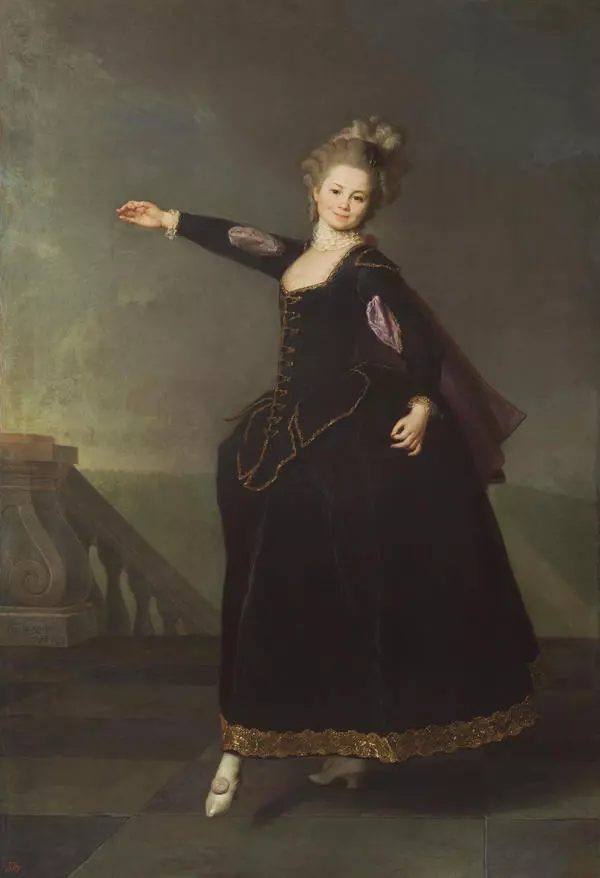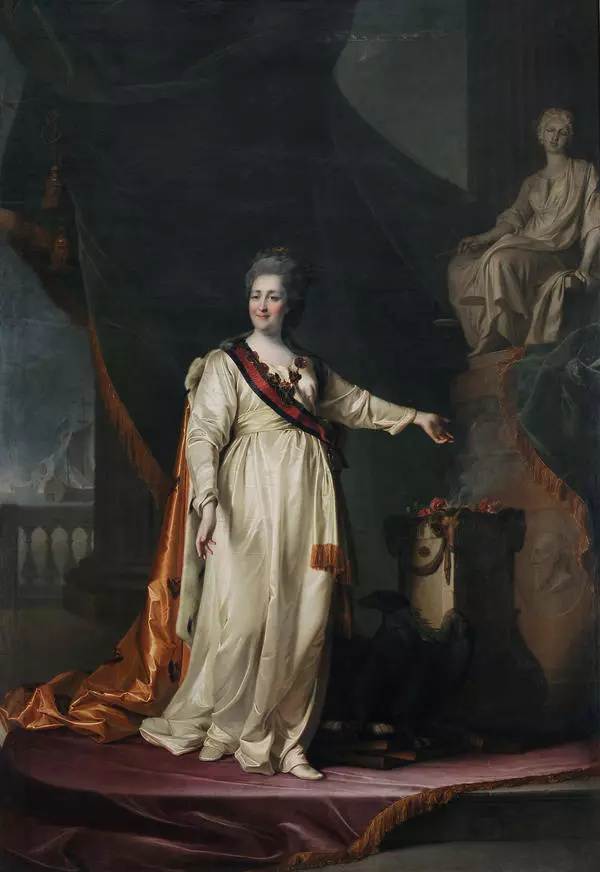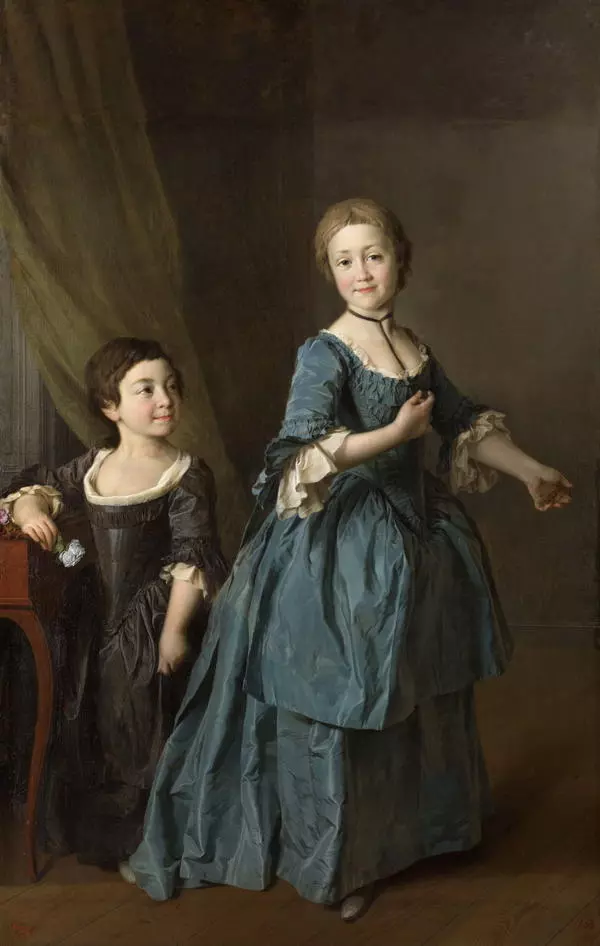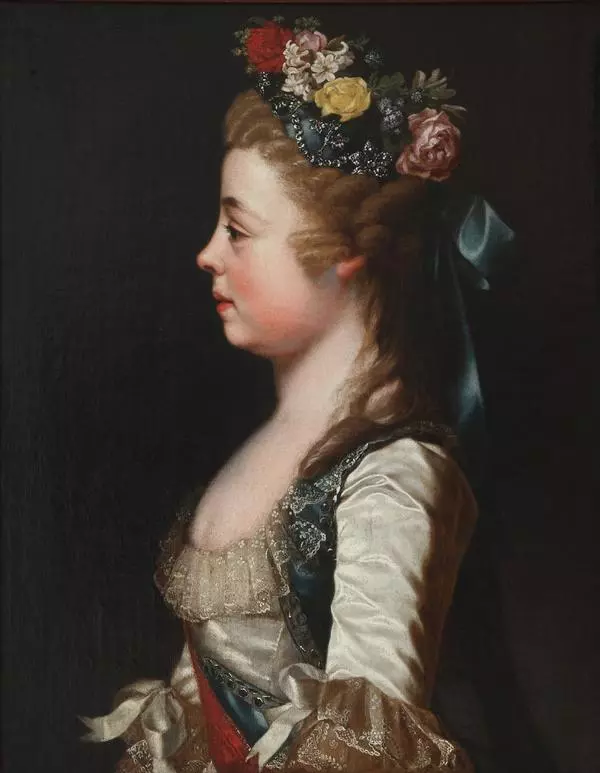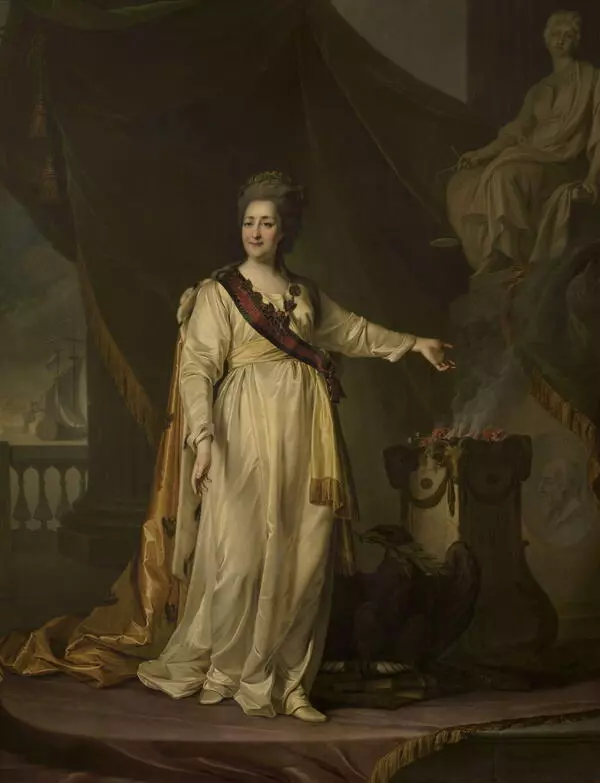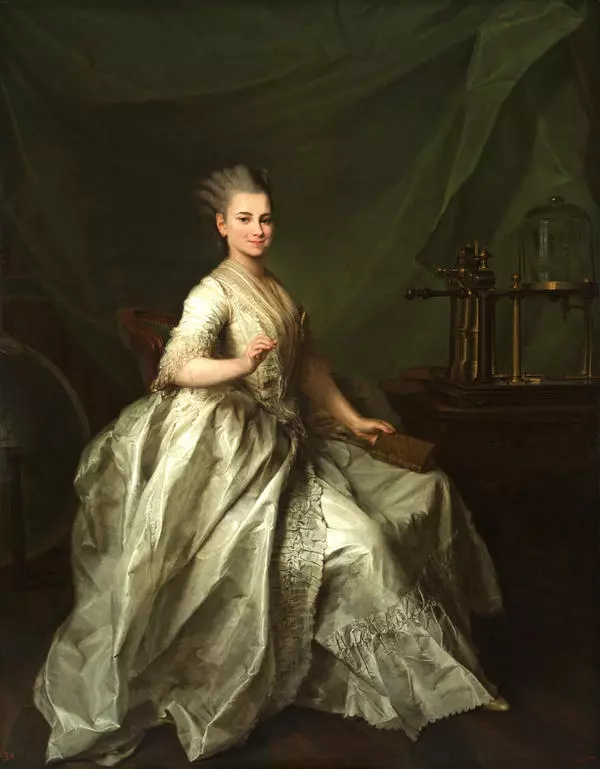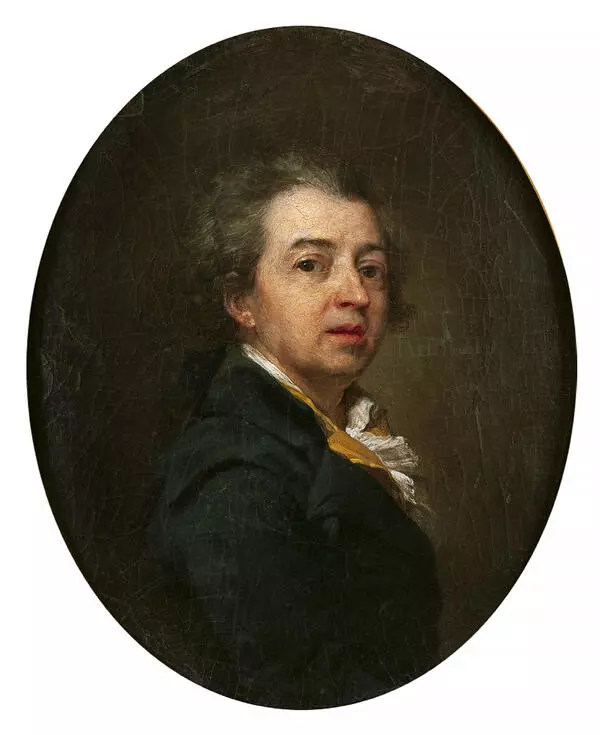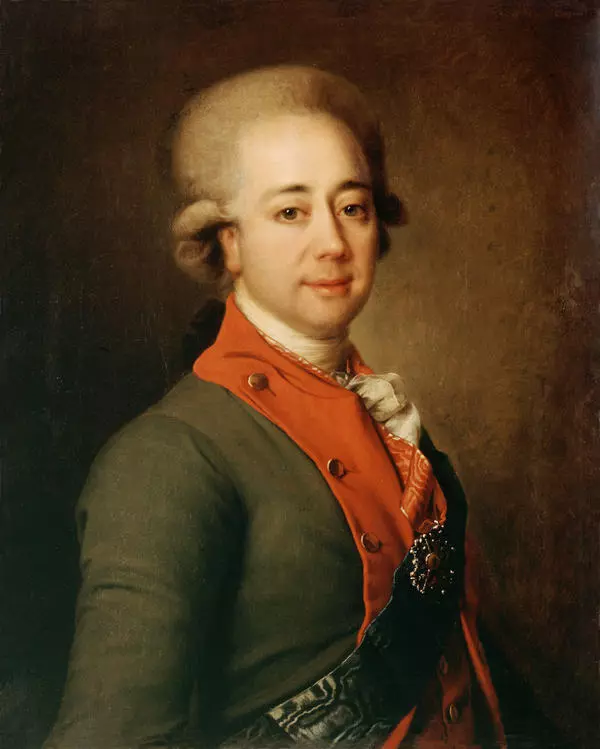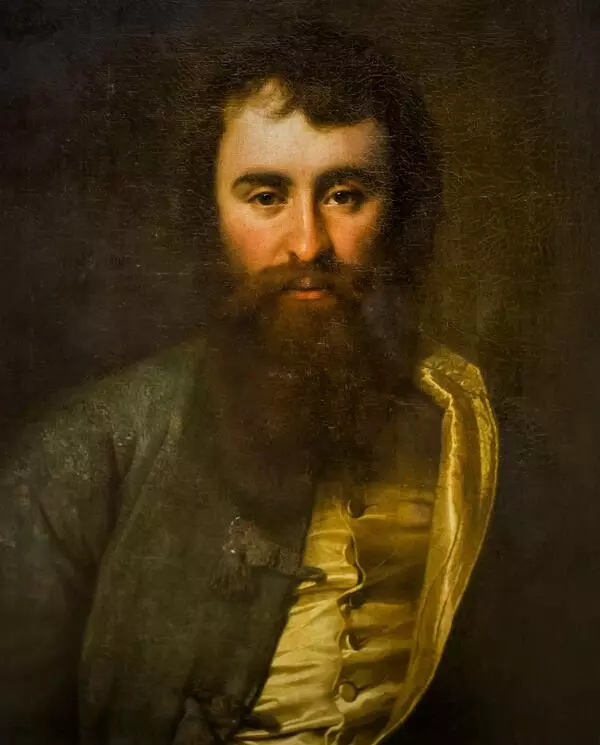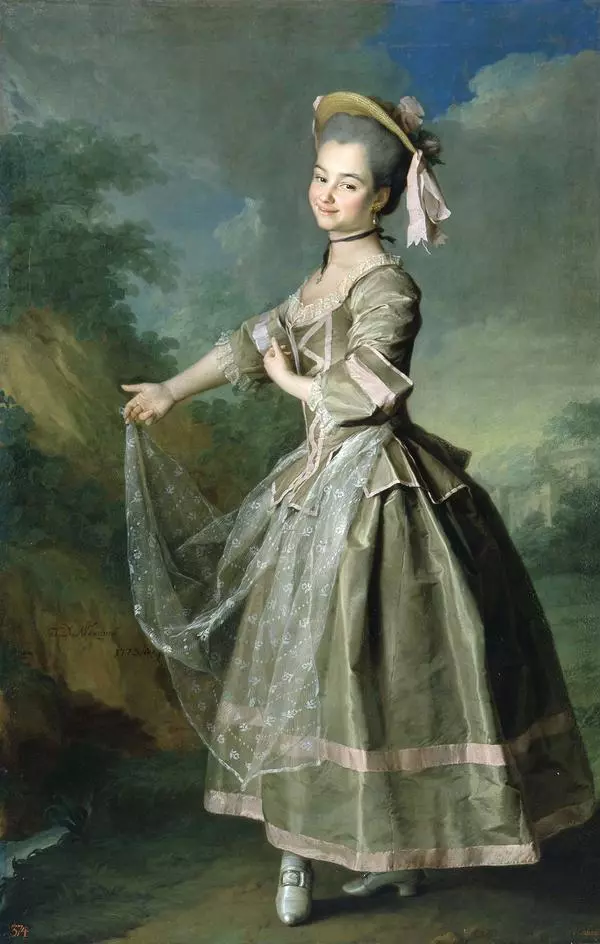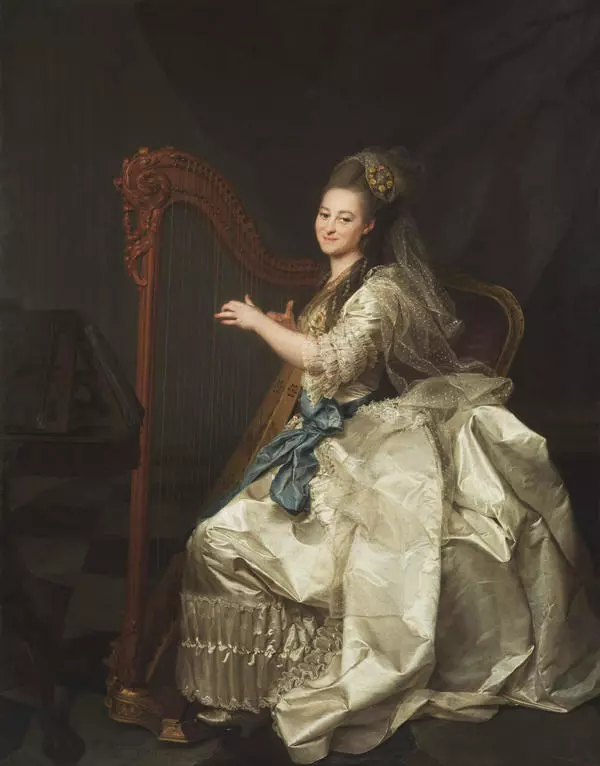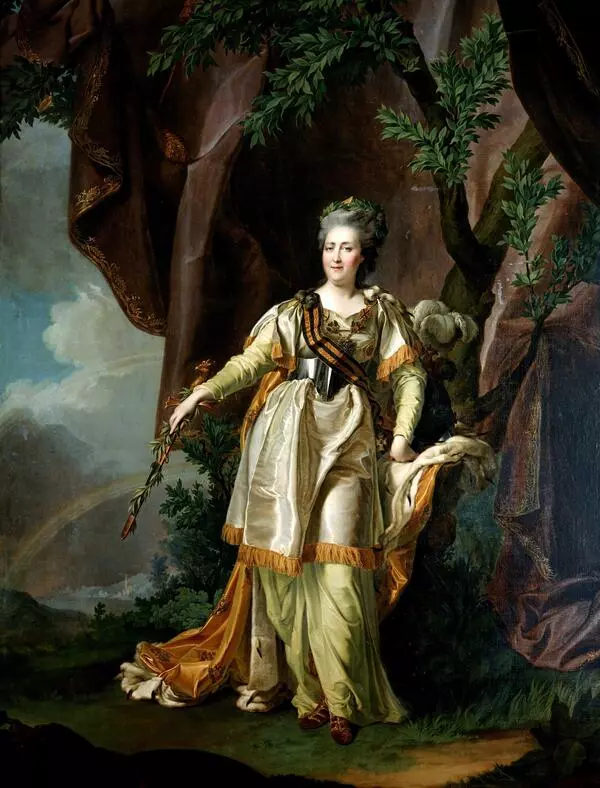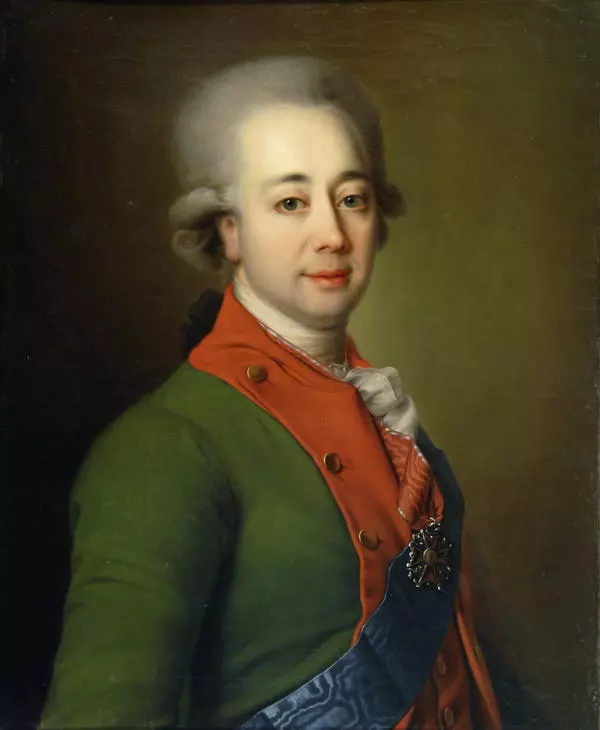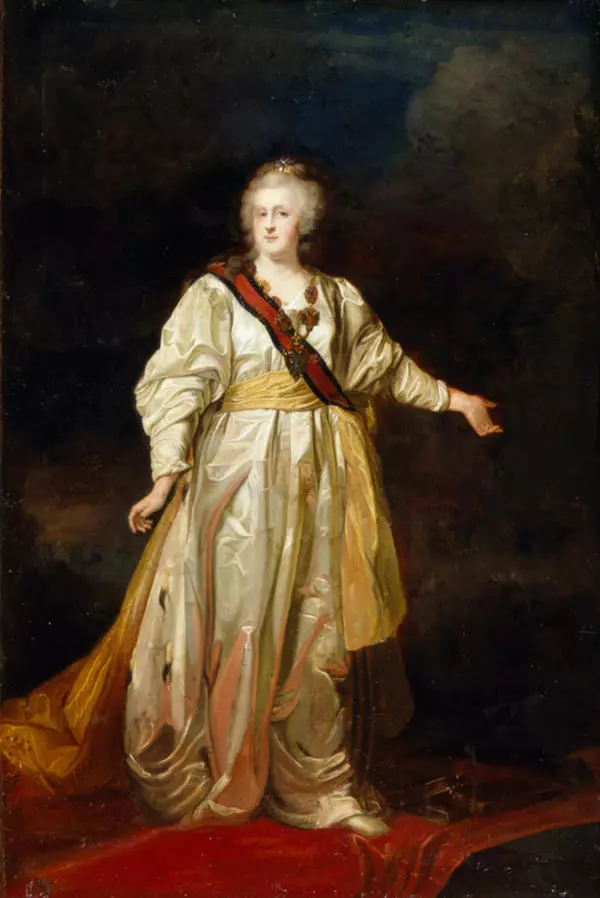The original portrait, created by the French painter Jean-Louis Voille in 1771, is stored in the State Russian Museum. Voille came to Russia during the reign of Catherine II and became a court artist at the ‘small court’ of Grand Duke Paul. In the 18th century, the portraits of the royal family members were mostly commissioned by foreign painters and subsequently turned into examples to be copied by Russian artists. The original portrait, created by the French painter Jean-Louis Voille in 1771, is stored in the State Russian Museum. Voille came to Russia during the reign of Catherine II and became a court artist at the ‘small court’ of Grand Duke Paul. In the 18th century, the portraits of the royal family members were mostly commissioned by foreign painters and subsequently turned into examples to be copied by Russian artists.
In 1925, the copy of the portrait of Paul I was transferred to the Omsk Museum from the Leningrad department of the State Museum Collection. It was created in the second half of the 18th century as a relatively accurate reproduction of Voille´s work.
This work belongs to the type of semi-ceremonial portraits, presenting the Grand Duke not in full height, but only waist-deep and against a neutral gray background. At the same time, the posture of the subject demonstrates a set of traditional accessories often used in ceremonial portraits. The sparkle of precious stones of the Order of St. Anne on the neck ribbon gently combines with the blue ribbon of the Order of St. Andrew. It is as if a ray of light highlights the face of the future Emperor Paul I, who was seventeen years old in 1771 when Jean-Louis Voille created the portrait. The mother of Paul I, Catherine II, continued to rule Russia, despite the adulthood of her son. In the portrait, the future emperor appears calm, peaceful, with a barely noticeable half-smile, also typical of the ceremonial portraits of that time.
In the lower left corner there is the signature of the artist Levitsky. After a series of attempts to identify common features, the researchers confirmed that the Omsk copy of the portrait of Jean-Louis Voille held in the Omsk Museum Collection was indeed made by Dmitry Levitsky.
Levitsky is called ‘the voice of the Catherine’s era.’ He drew portraits of the most important figures of that era, creating a whole gallery of the established people of his time. He possessed an extremely valuable quality for a portraitist to notice the personal features of his models and transfer them to the canvas. The portraits he made were ceremonial, yet lively. Despite the duty of a copyist to hide his personality when performing copy work, Levitsky managed to complete the entrusted copy, endowing the characters with deep emotional characteristics.




